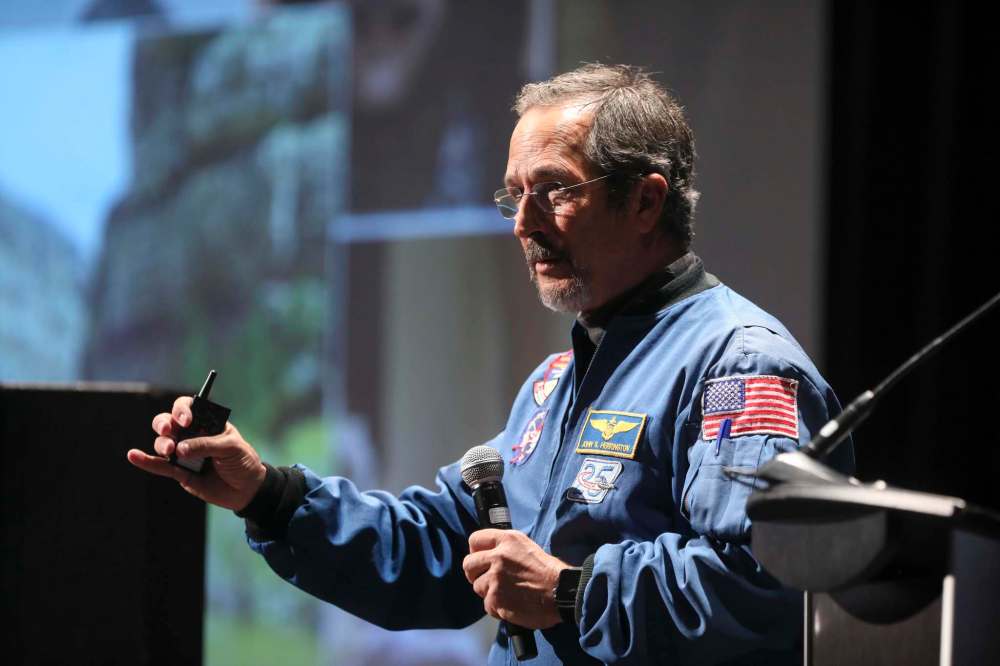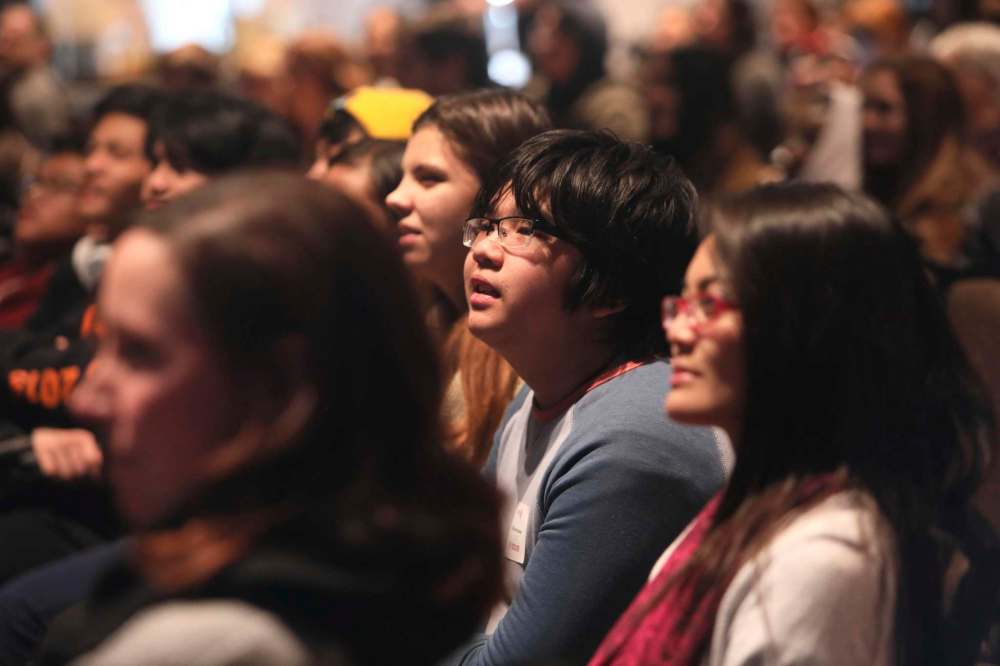Reach for the stars: first Indigenous astronaut seeks to inspire youth
Advertisement
Read this article for free:
or
Already have an account? Log in here »
To continue reading, please subscribe:
Monthly Digital Subscription
$1 per week for 24 weeks*
- Enjoy unlimited reading on winnipegfreepress.com
- Read the E-Edition, our digital replica newspaper
- Access News Break, our award-winning app
- Play interactive puzzles
*Billed as $4.00 plus GST every four weeks. After 24 weeks, price increases to the regular rate of $19.00 plus GST every four weeks. Offer available to new and qualified returning subscribers only. Cancel any time.
Monthly Digital Subscription
$4.75/week*
- Enjoy unlimited reading on winnipegfreepress.com
- Read the E-Edition, our digital replica newspaper
- Access News Break, our award-winning app
- Play interactive puzzles
*Billed as $19 plus GST every four weeks. Cancel any time.
To continue reading, please subscribe:
Add Free Press access to your Brandon Sun subscription for only an additional
$1 for the first 4 weeks*
*Your next subscription payment will increase by $1.00 and you will be charged $16.99 plus GST for four weeks. After four weeks, your payment will increase to $23.99 plus GST every four weeks.
Read unlimited articles for free today:
or
Already have an account? Log in here »
Hey there, time traveller!
This article was published 31/01/2019 (2444 days ago), so information in it may no longer be current.
When John Herrington blasted off into space in 2002, he took along a handmade Indigenous flute and an eagle feather, among other treasured items significant to his heritage.
As a mission specialist with the National Aeronautics and Space Administration, Herrington spent 13 days, 18 hours, 47 minutes on the International Space Station during that assignment.
The flute and the eagle feather now reside at the Smithsonian in Washington, D.C., as Herrington — a member of Oklahoma-based Chickasaw Nation — is the only Indigenous American to leave earth’s orbit, to take a spacewalk, to be an astronaut.

However, he knows other Indigenous engineers and scientists are eager to fill his spaceboots.
“A lot of friends of mine… want to go to space, they’re headed down that path, but as far as I know, there’s no one else,” the 60-year-old retired astronaut said Thursday between presentations at the Canadian Museum for Human Rights designed to inspire youth.
He spoke to two groups of students: about 100 from Winnipeg middle schools in attendance at the museum and several hundred more via remote link-up video in 15 northern Indigenous communities from Fort Frances, Ont., to Carcross, Yukon.
He said he sees his new mission on Earth firmly grounded in encouraging children to chase their dreams and fulfill their potential.
“I get a chance to go out and share my story with kids who have never had a role model. It’s not what I set out to do. When I came to NASA, they said you’re the first Indigenous astronaut. I had an opportunity to fulfill a role that I take very seriously… If I can make a difference in the life of somebody… that’s making a difference,” Herrington said.
The Winnipeg event was supported by a partnership between the CMHR and the Information and Communications Technologies Association Manitoba, as part of a conference called DisruptED, an annual workshop on the future of work and technology.
Herrington retired from the American space program in 2005, and later took to the road, bicycling across the continental U.S. to Florida from Washington, a distance of more than 6,700 kilometres. He stopped at every Indian reservation on the way and told his story.
Children at the museum Thursday peppered Herrington with questions, mostly about space, including technical queries about the rate of velocity to rocket out of the Earth’s orbit. One student asked his opinion of the Flat Earth Society; another asked him if a child were to be born in space, would the baby be an alien?
“I’d say he’s unique in the history of civilization, but I won’t call him an ‘alien,’” he said to a wave of titters from the audience.
With high school graduate rates among Indigenous Canadians and Americans rising but not matching graduation rates among non-Indigenous students, each presentation marks a signpost, he said.

“I hope they recognize (that) if I can achieve something like that, so can (they),” Herrington said, adding he has met adults over the years who’ve told him they heard his story when they were children and were inspired.
North American Indigenous cultures, such as the Ohio “mound builders,” grasped the higher sciences long before Europeans arrived. Cultures built pyramids, erected woodhenges, and designed elaborate celestial calendars on the surface of the land — and that history is just starting to be appreciated, he said.
The key to success is knowing you can’t do it by yourself; it takes people along the way to help anyone succeed, Herrington said. Pick a field and find professionals in it you can hang out with, he told the students.
“I had my parents. They encouraged me to go to school… Once I got into school, I got kicked out early on, because I didn’t study. Then, I got motivated by the people I worked with. I saw the practicality of the math in books and the guy I worked with convinced me to go back to school,” he said.
“Then, a gentleman I (escorted on a tour) in college was a fighter pilot in (the Second) World War… and he convinced me to join the navy,” said Herrington, who rose to the rank of commander.
“People come along in your life and make a difference. If I can do that for somebody else, then that’s what I’m put on Earth to do.”
alexandra.paul@freepress.mb.ca

